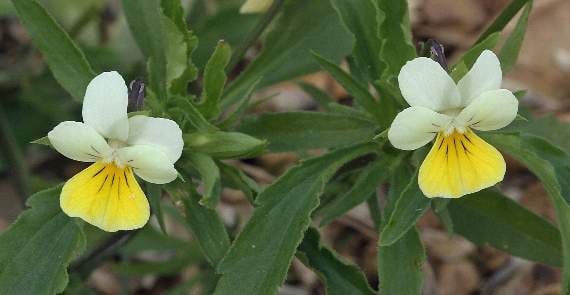In this week’s Nature Watch, photographer Ray Roberts marvels at the profusion of flowers that bloom just after the corn has been cut in local fields.....
After the cornfields have been harvested, I like to walk around them and see what flowers are taking advantage of the sunlight which had been denied to them for many weeks.
First to bloom among the short corn stubble are tiny field pansies – Viola arvensis – with their white flowers, about 12mm wide and a yellow ‘apron’ on the lower petal. The first field that I walked around was a path-field and I was able to go diagonally from gate to stile where I saw hundreds of these beautiful flowers that are officially classed, along with many other plants, as weeds of arable land.
Redshank – Polygonum persicaria – or Redleg as it is sometimes known, is another plant that comes alive among the corn stubble with its clumps of tiny pink flowers on branched stalks that are reddish – hence the name – when mature. I find it amazing really that just days after the corn has been cut, all these flowers are in bloom.
Around the edge of a field, close to the hedgerow, were lots of scarlet pimpernel – Anagallis arvensis – in bloom. These flowers only open up for a few hours each day and are always closed during wet or dull weather. Indeed, as they contain no nectar and are only visited by a few small insects they really don’t need to stay open for long.
A flower I found in profusion growing among the stubble had white four petalled blooms and I have no idea what it is. Despite looking through all of my books I am stumped. The only plant that I think it may be is one of the brassicas such as wild cabbage, charlock or rape which all have yellow four petalled blooms, but they could be freak plants producing white flowers. Perhaps a reader can help.
Also, around the hedge creep and both sides of a gateway, were some pineapple weeds – Chamomilla suaveolens. These have small flowers with no petals that are just like rough pea-sized balls with feathery leaves. Although the flowers might look a bit like miniature pineapples, the plant probably acquired its name because it has a strong aroma of that fruit.
Although the corn had been harvested there were still plenty of grains laying amongst the stubble and in one of the fields were a group of Canada geese feeding on them. These birds came over from North America during the 17th century and with treats like this in the fields I don’t think any of them want to go back. I wondered though, do you call the group of geese a gaggle whilst they are on the ground or just when they are flying with their honking calls.
In one of the cornfields there were literally rows of common field-speedwell – Veronica persica – with their light blue petals which have darker blue veins and the smaller petal usually almost white. It looked as if these speedwell flowers had been sown in rows along with the corn, but of course, they were not sown, they grew from seeds already in the soil.




